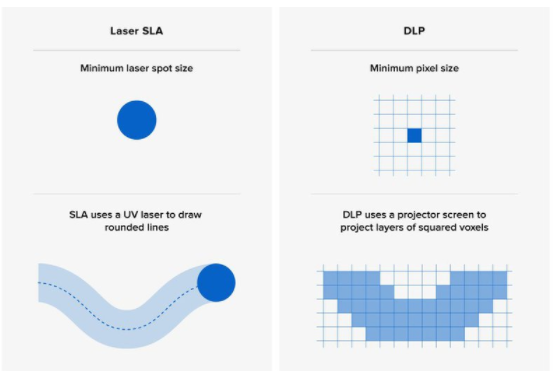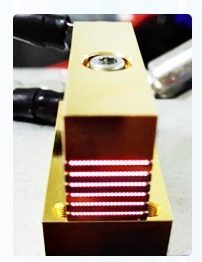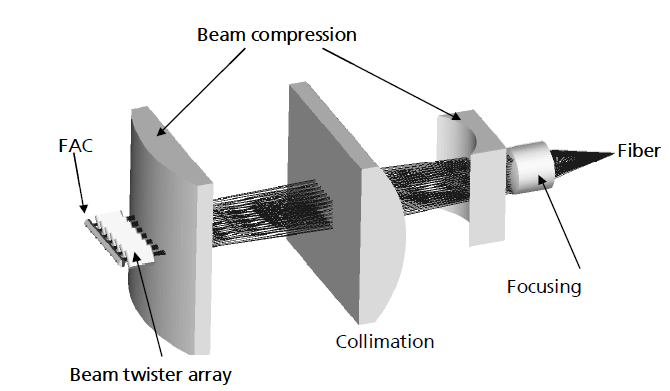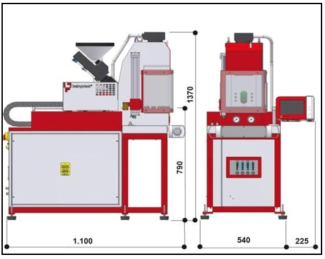



Metal 3D printing is popular in many industries such as aerospace, automotive, and medical, as it enables complex metal parts to be created at a relatively low price compared to traditional fabrication techniques. This type of printing uses lasers as a light source due to the high power required for this type of application and among the most widely used techniques is digital light processing (DLP).
Broadly speaking, this technique is characterized by curing the material of a complete layer at once, instead of point by point of the same layer as other techniques do, commonly using a gas laser, which makes it a technique with shorter processing time.
The problem with using a gas laser with the DLP technique is that the laser beam must expand, losing energy density, to cover the entire area of the dynamic mask used to solidify an entire layer at once during the process. printing process. This mask carries a design pattern through which light passes and transmits the pattern to the receiving substrate via a liquid crystal display (LCD), spatial light modulator (SLM), digital micromirror device (DMD), etc., which are used as a dynamic mask in DLP printing. For this reason, Snelloptics proposes a new head for 3D printing of metals using the DLP technique, replacing the gas laser with a stack of solid-state laser diodes and performing the optical projection of the DLP using micro-optics and projection lenses, without using the liquid crystal display (LCD), a spatial light modulator (SLM), a digital micromirror device (DMD), since these traditional optical elements will not support the energy density necessary for 3D printing of metals.
The proposed solution consists of redesigning the optical system corresponding to these stacks of laser diodes to manufacture them using the manufacturing line that integrates the proprietary technologies developed, which also entails an adaptation of the current manufacturing line.
This fact gives the new 3D printing head for metals a series of competitive advantages over heads based on gas lasers:
• Increased energy density provided by the head, thanks to performing the optical projection of the DLP using micro-optics and projection lenses, without using the liquid crystal display (LCD), a spatial light modulator (SLM), a device of digital micromirrors (DMD), since these traditional optical elements will not support the energy density necessary for the 3D printing of metals
• Lower manufacturing cost of the head: uses less commercial optical and optomechanical elements.
• Reduction of head manufacturing time: integration of the optics in a single step, reducing the alignment time of the independent components.
• Lower energy consumption: the electrical consumption required for the diode laser stack ranges from 2 to 30V, compared to 440V for a gas laser.
• Automated manufacturing line: reduces cycle time.
• 3D printing and additive manufacturing using the new head achieves a significant reduction in energy, human resources and time required, resulting in reduced manufacturing time compared to those provided by traditional heads.
Project 2021/C005/00147324 funding by the European Union NextGenerationEU/ PRTR



